15 Vegetables You Can Easily Grow Indoors for Fresh Harvest
Imagine stepping into your kitchen on a cold winter morning and snipping fresh, peppery arugula for your eggs, or harvesting crunchy baby carrots from a pot in your living room. It might sound like something reserved for people with fancy greenhouses, but I’m here to tell you it’s absolutely possible for anyone.
My own journey into serious gardening didn’t start in a big backyard; it started indoors with a few herbs on a windowsill. I quickly learned that with a little creativity and the right setup, you can turn a small corner of your home into a productive mini-farm. Indoor vegetable gardening is not only rewarding, but it’s also a powerful way to stay connected to nature and enjoy the freshest possible food, no matter the season.
This guide is born from my own trials and many errors. I’ll walk you through 15 of my favorite vegetables that are beginner-friendly and grow exceptionally well indoors.
Before You Start: The Two “Secret Weapons” for Indoor Success

Before we dive into the list, I need to be completely honest about two things I learned the hard way. While many houseplants can survive on a bit of window light, growing vegetables—plants whose job is to produce food—is a bit more demanding. Getting these two things right is the key to moving from a few sad sprouts to a real, edible harvest.
Your Best Friend: A Simple Grow Light
My first attempt at growing lettuce indoors was a failure. I put it in my “sunniest” window, but the plants grew tall, pale, and “leggy,” never forming proper leaves. They were desperately stretching for more light. The truth is, a window is rarely enough, especially in the short, gloomy days of winter. The single best investment you can make is a simple LED grow light. You don’t need a complex, expensive system. A single clip-on lamp or a full-spectrum bulb in a desk lamp can provide the intense, direct light your vegetables need to thrive.
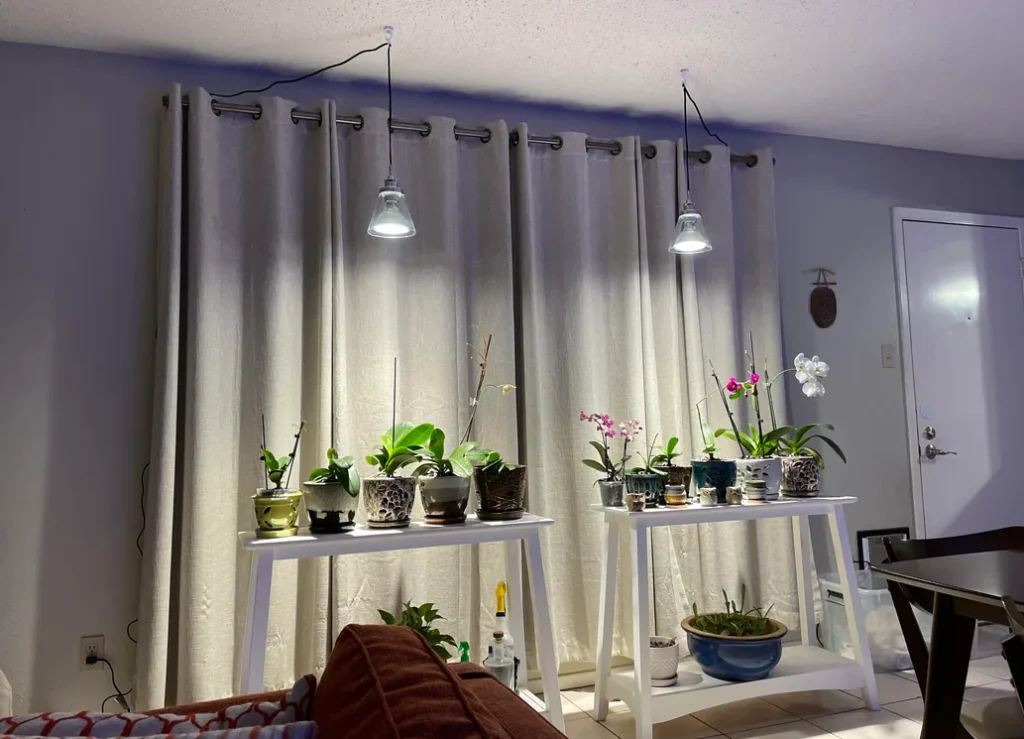
A Proper Home: The Right Sized Container
My second big mistake was trying to grow everything in tiny, cute pots. Vegetables, even small ones, need room for their roots to grow and search for nutrients and water. A cramped pot leads to a stunted, unhappy plant. As we discussed in my Ultimate Guide to Container Gardening, my rule of thumb is to always choose a pot that seems a little too big for the seedling. Trust me, the plant will grow into it and thank you for the space.
My Top 15 Picks for Your Indoor Vegetable Garden
Here is my personal list of the most reliable and rewarding vegetables you can grow inside. I’ve grown all of these myself and can vouch for their ability to bring a little bit of homegrown joy to your home.
1. Microgreens: The Fastest Food on Earth

If you want a gardening success story in about ten days, this is where you start. Microgreens are the ultimate crop for an impatient gardener (like me!). They are simply the baby seedlings of vegetables like radishes, kale, or broccoli, and they are packed with intense flavor and nutrients.
- Why I Love Them: It’s almost foolproof. It’s like a fun science experiment you can eat. Sprinkling a few homegrown radish microgreens on a sandwich is a gourmet touch that took almost no effort.
- Growing is Simple: All you need is a shallow tray with drainage holes. Fill it with potting mix, sprinkle your seeds densely, cover with a thin layer of soil, keep it moist, and place it under a light. You’ll be harvesting with a pair of scissors in just 10-14 days.
2. Lettuce: Your Own Cut-and-Come-Again Salad Bar
There’s nothing quite like the taste of truly fresh lettuce. The key to growing it indoors is to forget about trying to grow a dense head like iceberg.

- The Secret is the Variety: Choose loose-leaf varieties like ‘Black Seed Simpson’, ‘Tom Thumb’, or a colorful ‘Salad Bowl’ mix.
- My Method: I grow mine in a rectangular window box. Instead of harvesting the whole plant, I just snip the outer leaves as I need them. The plant will keep producing new leaves from the center for weeks! This “cut-and-come-again” method is one of the most satisfying simple vegetable growing techniques for any beginner.
3. Green Onions (Scallions): The Magical Plant That Never Ends
This is one of my all-time favorite garden hacks. It’s the cheapest, most reliable way to have a never-ending supply of fresh green onions.

- The Easiest “How-To”: Buy a bunch of green onions from the grocery store. Use the green tops, but save the white bottom part with the roots. Place these root-ends in a glass of water on your windowsill. Within days, the green tops will start to regrow.
- A Longer-Lasting Trick: After they start growing in water, I plant them in a small pot of soil. I can then snip off the green tops with scissors whenever I need them, and they will keep regrowing for months. It feels like magic.
4. Spinach: The Nutrient-Packed Green for Cooler Spots
Spinach is famous for being a superfood, and it’s surprisingly well-suited to indoor life because it actually loves cooler temperatures.
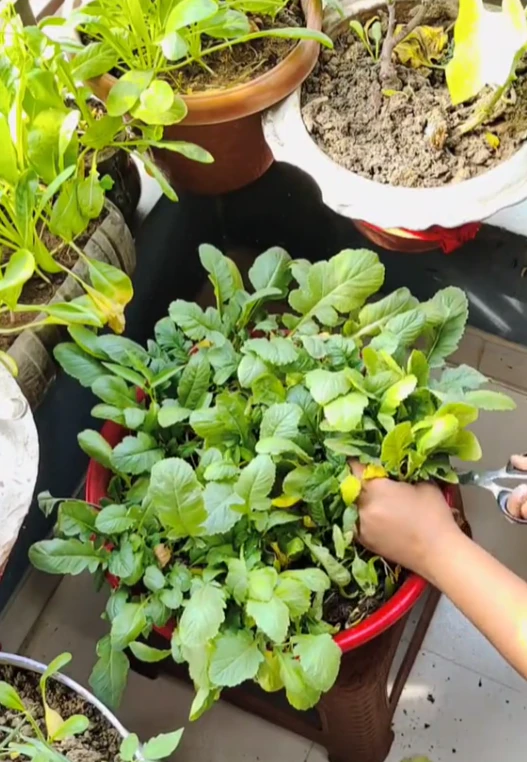
- Why It Works Indoors: Summer heat outdoors can cause spinach to “bolt” (flower prematurely) and turn bitter. The stable, cooler temperature of a home is often perfect for it.
- My Experience: I find that growing spinach indoors often produces leaves that are more tender and sweet than my outdoor crop. A handful of fresh, homegrown spinach in an omelet is an amazing way to start a winter day. It just needs consistent moisture to thrive.
5. Radishes: A Crunchy Harvest in Under a Month
Yes, you can absolutely grow root vegetables indoors! Radishes are the perfect one to start with because they are so astonishingly fast.
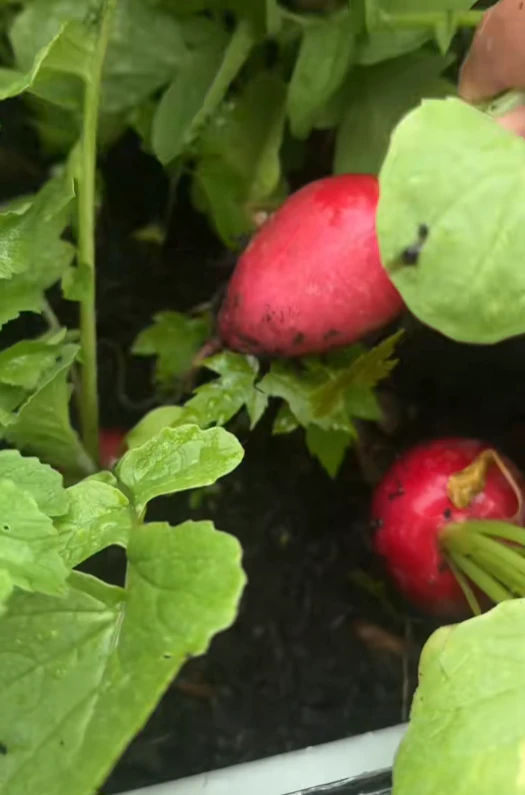
- What You Need: The two keys to success are a pot that’s deep enough (at least 6-8 inches) and choosing a small, round variety. Look for classics like ‘Cherry Belle’.
- The Mistake to Avoid: As I learned the hard way and wrote about in my guide to beginner gardening mistakes, you must thin your seedlings. If they are too crowded, you’ll get a pot full of beautiful leaves and no crunchy radishes. Give each plant about two inches of space.
6. Carrots: The Fun of an Underground Harvest, Indoors!
Pulling a homegrown carrot from a pot is pure joy, especially if you have kids. You won’t be growing giant carrots, but you can have a wonderful harvest of sweet, tender baby carrots.

- It’s All About the Variety: This is critical. Don’t try to grow a long, traditional carrot variety. Look specifically for short, round, or miniature types designed for containers. My absolute favorites are ‘Paris Market’ (a small, round type) and ‘Thumbelina’.
- Give Them a Deep Home: Even these small carrots need room to grow down. You’ll need a pot that is at least 8-10 inches deep. I find that fabric grow bags work wonderfully for this. And remember, they need light, fluffy soil, just like in a real yard garden.
7. Kale: A Powerhouse Superfood in a Pot
I was shocked when I discovered you could grow kale indoors. The secret is choosing a compact, “dwarf” variety. This means you can have a constant supply of one of the most nutrient-dense greens on the planet.

- The Right Variety: Don’t try to grow a standard kale. Look specifically for seeds of ‘Dwarf Blue Curled Vates’.
- My Experience: This is a plant that absolutely needs a grow light to be happy indoors. It’s a bit slower than lettuce, but it’s incredibly hardy. The flavor of the young, tender leaves is much milder and less chewy than the big leaves from outdoor plants.
8. Garlic Greens: A Gourmet Garnish from a Single Clove
You’re not going to grow a full head of garlic indoors (that requires a long cold period), but you can easily grow the delicious green shoots, which taste like a mild mix of garlic and chives.

- The Simple “How-To”: Take a single clove of garlic from your kitchen. Plant it about an inch deep in a small pot of soil. In a couple of weeks, it will send up green shoots.
- How I Use Them: I use scissors to snip the greens and sprinkle them over baked potatoes, eggs, or salads. It’s an easy way to add a fresh, gourmet flavor to winter meals.
9. Herbs: The Heart of the Indoor Kitchen Garden
Of course, no indoor edible garden is complete without herbs. While they aren’t technically vegetables, they are the absolute cornerstone of any indoor growing setup, and the easiest place for a beginner to start. The satisfaction of snipping your own fresh parsley or basil for a recipe is immediate and inspiring.

- My Top 5 for Indoors: Basil, Mint, Parsley, Chives, and Rosemary.
- A Quick Tip: Grouping them together on a sunny windowsill not only looks beautiful but also makes watering easy. Just remember my golden rule that I learned the hard way: always give mint its own pot! It’s a bit of a garden thug and its roots will quickly take over any space it shares.
- For a Deeper Dive: We’ve only scratched the surface here. For a much more detailed walkthrough of setting up a dedicated indoor herb garden, choosing the right pots, and dealing with common herb problems, you can check out my complete guide to starting your first indoor garden.
10. Kale (Dwarf Varieties): A Superfood Powerhouse in a Pot
I know what you’re thinking—kale plants get huge in the garden! And you’re right. But I was thrilled to discover that there are compact, “dwarf” varieties that are perfectly happy in a pot. Growing your own kale indoors means you have a constant supply of one of the most nutrient-dense foods on the planet, perfect for winter smoothies and salads.

- The Secret is the Variety: Don’t try to grow a standard variety. Look specifically for seeds of ‘Dwarf Blue Curled Vates’ Kale. It’s bred to stay small and compact.
- My Experience: This is a plant that absolutely needs a grow light to thrive indoors. With enough light, it’s surprisingly low-maintenance. The flavor of the young, tender leaves you grow inside is much milder and less tough than the large leaves from outdoor plants.
11. Beets (But for a Delicious Surprise!)
Here’s a little secret from my garden to yours. Growing a big, round beet root indoors is very difficult because they need a lot of space and consistent conditions. But, you can very easily grow beets for their delicious and nutritious leafy tops!
- A Gardener’s Hack: Beet greens taste a lot like their cousin, Swiss chard. They are packed with vitamins and are wonderful when sautéed with a little garlic.
- How I Do It: I plant beet seeds in a container just as I would for salad greens, a bit more densely than I would outdoors. Then, I use the “cut-and-come-again” method, harvesting the outer leaves once they reach about 4-6 inches tall. It’s a fantastic way to get a “two-for-one” experience from a single seed packet.
12. Mushrooms: Growing a Magical Harvest in the Dark
This is a completely different and incredibly fun type of indoor gardening. Growing mushrooms from scratch is a complex science, but starting with a simple mushroom grow kit is almost foolproof and absolutely magical.
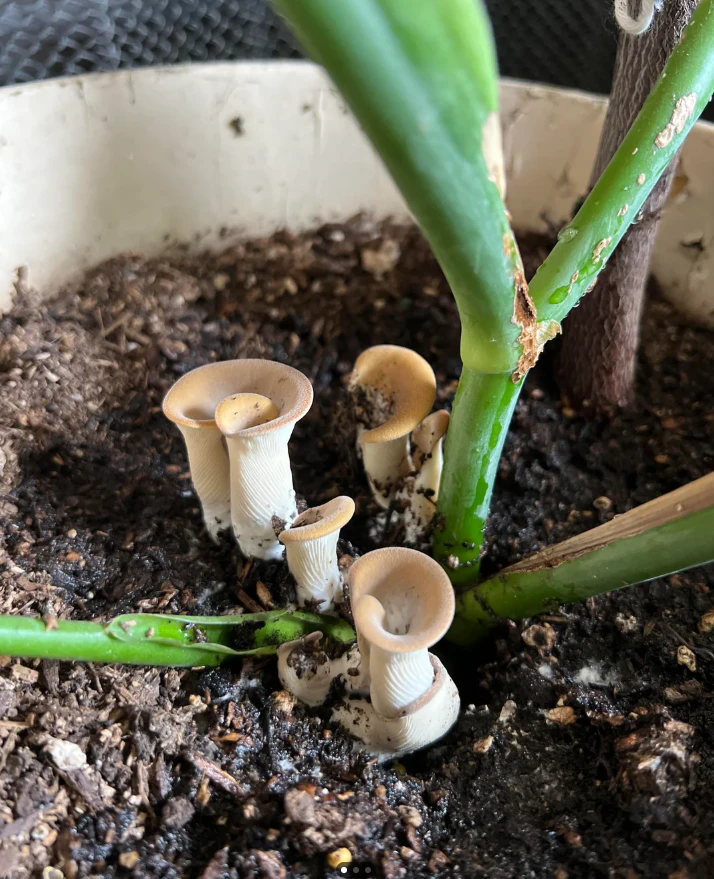
- Why It’s Perfect for Beginners: The kit comes with everything you need—a block of growing medium that’s already inoculated with mushroom spawn. You just have to provide the right moisture and conditions.
- My First Experience: I will never forget my first Oyster mushroom kit. For days, nothing happened. Then, almost overnight, a tiny cluster of “pins” appeared. Just a few days later, I had a huge, beautiful flush of fresh mushrooms. It’s the fastest and most surprising transformation I’ve ever seen in a garden. It’s a fantastic project for a shady corner of your kitchen where nothing else will grow.
13. Dwarf Peas: A Sweet, Crunchy Snack for a Sunny Window
This one is more for the fun and joy of it than for a huge harvest. But the experience of watching pea tendrils climb and eating a sweet, crunchy pea pod you grew yourself is absolutely worth it.
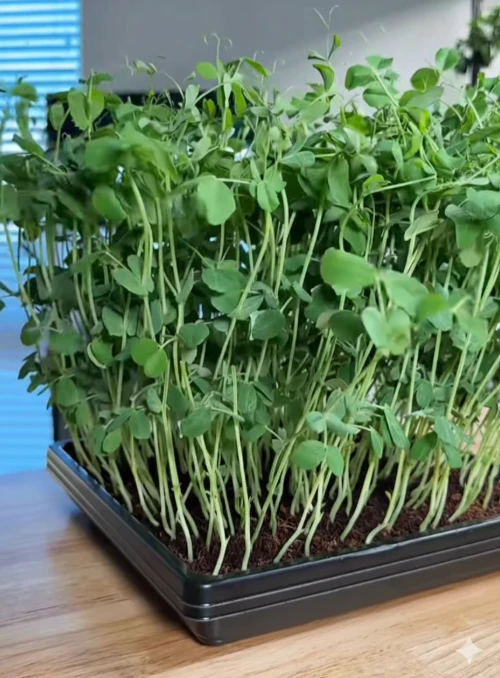
- The Right Plant is Key: You can’t grow a giant vining pea plant indoors. You need to find a very compact “bush” or “dwarf” variety of snap pea. Look for varieties like ‘Tom Thumb’ or ‘Little SnapPea’.
- What They Need: Peas need a surprisingly deep pot (at least 8-10 inches) for their roots and a small trellis to climb on. A very sunny window or a grow light is a must. The harvest will be small, but the joy is immense, especially if you have kids.
14. Dwarf Cherry Tomatoes: The Crown Jewel of the Indoor Garden
Yes, it’s true! You can grow your own sweet, juicy cherry tomatoes indoors. But this is the one plant on the list where variety is not just important, it is everything.

- A Critical Warning: Do not try to bring a standard outdoor tomato plant inside or grow one from a seed packet meant for the garden. You will end up with a giant, sad, fruitless vine.
- The Solution: You must choose a “micro dwarf” tomato variety specifically bred for growing in small pots under lights. My absolute favorites are ‘Tiny Tim’ and ‘Micro Tom’. These plants only grow about 8-12 inches tall but can produce a surprising number of delicious little tomatoes.
- My Experience: The joy of picking a perfectly ripe, homegrown cherry tomato in the middle of February is a feeling I can’t even describe. It tastes like pure sunshine. For this plant, a grow light is not optional; it’s essential.
15. Small Hot Peppers: A Splash of Color and a Touch of Spice
Many hot pepper plants are naturally small and compact, making them perfect candidates for indoor growing. They are also beautiful, ornamental plants when they are covered in colorful little peppers, adding both heat to your kitchen and beauty to your home.

- What to Look For: Choose small, prolific varieties like Thai Hot, Pequin, or some ornamental pepper varieties that are also edible.
- My Personal Tip: Peppers are true heat and light lovers. They will need your sunniest window and a supplemental grow light to be truly productive. But a single, healthy plant can provide you with a steady supply of fresh heat for your cooking all winter long.
My Funniest Indoor Gardening Mistake (and an Important Lesson)
Before we finish, I have to share a story. Feeling confident after growing some herbs, I decided I would try to grow a zucchini indoors one winter.

I had a big pot and a powerful grow light. What could go wrong? The seed sprouted, and it grew. And it grew. And it grew. Within a month, a single, monstrous vine had started to snake its way across my living room floor, knocking things off my coffee table. It was a hilarious disaster that taught me the most important lesson of indoor vegetable gardening: always choose the right variety for your space. Just because you can make a seed sprout indoors, doesn’t mean you should. That experience is a perfect example of one of the common beginner gardening mistakes I talk about often!
Conclusion: You Don’t Need a Yard to Be a Gardener
I hope this list has inspired you and shown you that an indoor vegetable garden is completely achievable, no matter how small your space. The key is to manage your expectations and choose the right plants for the job.
You don’t have to grow all 15. In fact, please don’t! Start with one or two. Try the “never-ending” green onion hack on your windowsill, or a small tray of microgreens on your kitchen counter. Feel the immense satisfaction of harvesting something you grew with your own hands.
You don’t need a backyard to be a vegetable gardener. You just need a pot, a little light, and the curiosity to begin.







